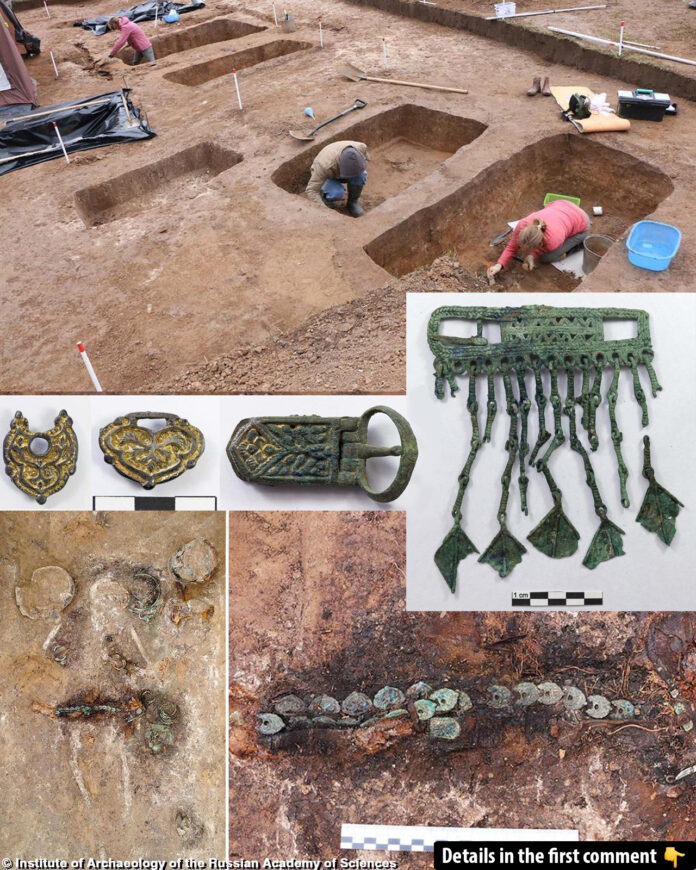In the heart of Muroma city, nestled along the left bank of the Oka River in Russia, archaeologists have uncovered a significant piece of history—a Muromian burial site that dates back to the early 10th century CE. This discovery sheds light on the life, trade, and cultural practices of the Muromians, a Volga-Finnic people whose legacy has long been overshadowed by their assimilation into the East Slavs. The recent findings offer a rare glimpse into their vibrant world, highlighting their connections with distant lands and their role in the broader tapestry of Eurasian history.
Who Were the Muromians?
The Muromians were a Volga-Finnic people who inhabited the Oka River basin in what is now Russia’s Vladimir Oblast. Historically, they played a significant role in the region, paying tribute to Russian princes and gradually becoming integrated into the Rus’ lands during the 11th and 12th centuries. Despite their assimilation, the Muromians left behind a legacy that speaks of a unique cultural identity and robust trade networks that connected them to far-reaching regions.
Unlike some of their contemporaries, the Muromians left little written record. Most of what is known about them comes from archaeological evidence, making discoveries like the burial site in Muroma all the more significant. These findings help fill in the gaps of a history that was nearly lost to time, revealing a people who were deeply engaged in trade, craftsmanship, and cultural exchange.
Uncover the story of the Minoans – watch the video to explore the rise and fall of this fascinating ancient civilization!
The Excavation: Key Discoveries
The burial site unearthed in Muroma contains the remains of 13 individuals, predominantly male, laid to rest in inhumations oriented towards the north. This orientation, along with the grave goods found alongside the burials, provides valuable insights into Muromian funerary practices and social hierarchy.
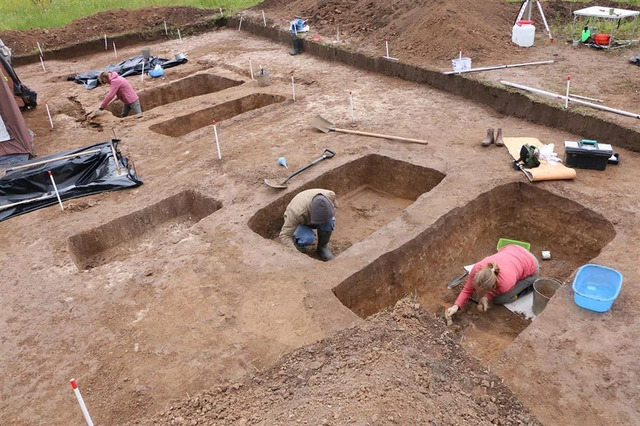
Among the most remarkable finds was a high-status burial containing an array of artifacts that underscore the wealth and influence of the individual. This burial included weapons such as an axe and a spear, as well as personal adornments like bronze bracelets and silver rings. A non-ferrous metal cauldron and a gilded belt plaque made of white metal further emphasized the individual’s elite status. Additionally, a beaver tail bag containing two dirhams—Islamic coins widely used in Europe during the Viking era—points to the Muromians’ involvement in extensive trade networks.
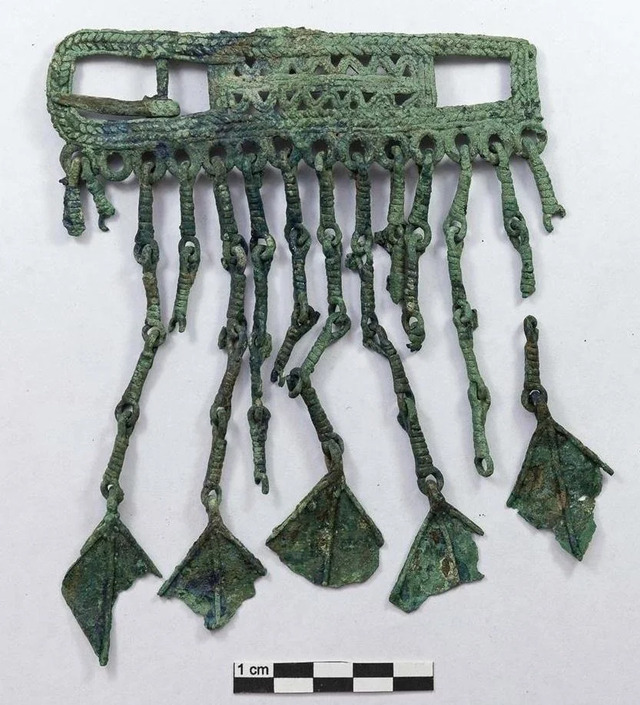
Significant Artifacts and Their Implications
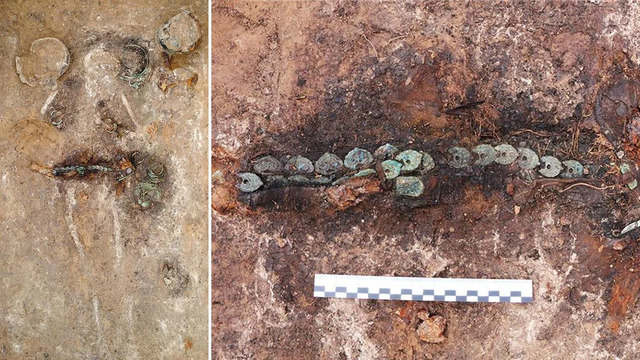
The artifacts recovered from the burial site provide a window into the Muromians’ material culture and their connections with the wider world. The dirhams, for instance, were a form of currency that circulated widely across Europe, particularly in regions with Viking trade connections, such as York and Dublin. The presence of these coins in Muroma suggests that the Muromians were part of a vast trade network that spanned continents.
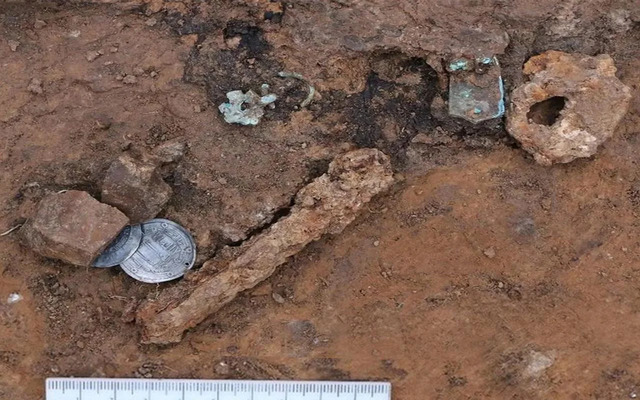
The gilded belt plaque, with its Hungarian design influences, highlights another layer of cultural exchange. Similar belts have been found in regions stretching from the Perm Kama area to the Carpathian basin, indicating that the Muromians were influenced by, and possibly interacted with, diverse cultures across Eurasia.
Jewelry items found in the female burials, including headdress pendants, temporal rings, and openwork belt buckles, further illustrate the sophistication of Muromian craftsmanship. A Glazov-type torc, a type of neck ring, adds to the evidence of their skilled metalworking and their appreciation for ornamental beauty.

Trade and Cultural Interactions in the 10th Century
The findings at the Muromian burial site underscore the tribe’s active participation in international trade during the first millennium CE. Their connections with distant regions were facilitated by their strategic location along the Oka River, which served as a vital trade route. The presence of dirhams and other trade goods suggests that the Muromians were not isolated but were instead integral players in a network that connected them to the Middle East, Scandinavia, and beyond.
Dr. Olga Zelentsova, a leading archaeologist from the Russian Academy of Sciences, emphasized the importance of these discoveries in expanding our understanding of the Muromians’ lifestyle and economic activities. “We now know that the Murom tribes on both sides of the Oka River were actively engaged in international trade,” she noted. The artifacts found in the graves are a testament to the tribe’s economic vitality and their ability to establish connections with distant cultures.
Historical and Archaeological Importance
The Muromian burial site is more than just a collection of artifacts; it is a vital piece of the puzzle in understanding the dynamics of Eurasian trade and cultural interaction during the early medieval period. The site offers evidence of a people who were both rooted in their local traditions and open to influences from far-flung regions. The combination of local craftsmanship and imported goods paints a picture of a society that was both dynamic and interconnected.
The discovery also challenges previous assumptions about the Muromians’ role in history. Long considered a relatively obscure group, the Muromians are now emerging as a significant cultural and economic force in the region. Their burial practices, material culture, and trade connections reveal a complexity that was previously underappreciated.
Video
Explore the origins of Russia in this captivating video by Alex Gendler – watch to learn about the fascinating history behind the rise of this powerful nation!
Conclusion
The excavation of the Muromian burial site in Muroma is a landmark discovery that enriches our understanding of a once-marginalized people. The artifacts and remains uncovered at the site offer invaluable insights into the Muromians’ way of life, their social structures, and their interactions with the broader world. As researchers continue to study these findings, we are likely to uncover even more about the Muromians and their place in the history of Eurasia.
This discovery not only highlights the Muromians’ vibrant culture but also underscores the importance of archaeology in uncovering the hidden stories of the past. The Muroma burial site stands as a testament to the enduring legacy of a people who were far more influential and interconnected than history has often acknowledged.
